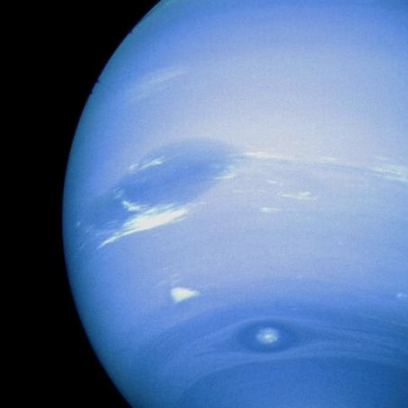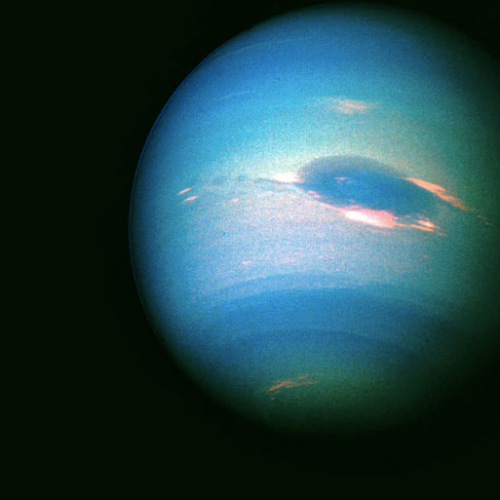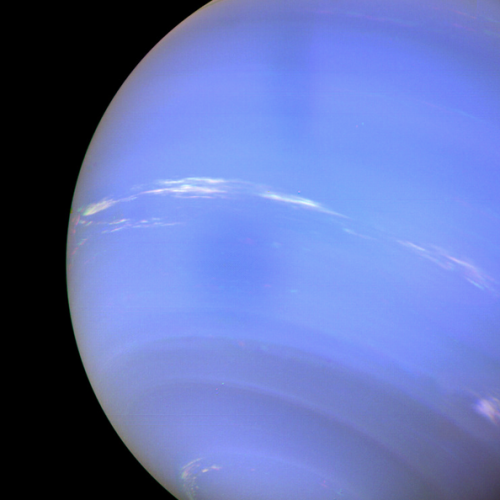CMB!!!
CMB!!!
Aka the cosmic microwave background, which is a huge piece of evidence for the Big Bang Theory of cosmology, a remnant from the early universe.
Also my favorite superhero is Spiderman.
WANT MORE? GET YOUR HEAD STUCK IN THE STARS AT MY BLOG!

I am omnipresent
More Posts from Acosmicgeek and Others

THE LIFE OF A STAR: STAR NURSERIES
How did this "star stuff" come to exist? The life of stars is a cycle: a star's birth came from a star's death. When it comes to star birth, the star nebulae reigns supreme.
A Nebula (take a look at pictures, they're some of the most beautiful things in the universe) is a giant cloud of dust and gas. This is the region where new stars are formed. Nebulae live in the space in between stars and between galaxies - called interstellar space (or the interstellar medium) - and are often formed by dying stars and supernovas (NASA).
This cloud of particles and gases is mostly made of hydrogen (remember - stars mostly fuse hydrogen!). These appear as patches of light (emission, reflection, or planetary-types) or a dark region against a brighter background (dark-type). This depends on whether "... it reflects light from nearby stars, emits its own light, or re-emits ultraviolet radiation from nearby stars as visible light. If it absorbs light, the nebula appears as a dark patch ..." (The Free Dictionary).
There are four main types of nebulae: emission, reflection, dark, and planetary nebulae.
Emission nebulae are a high-temperature gathering of particles, of which are energized by a nearby ultra-violent-light-emitting star. These particles release radiation as they fall to lower energy states (for more information on electrons moving to energized states and falling back to lower states, read this). This radiation is red because the spectra/wavelength of photons emitted by hydrogen happens to be shifted to the red-end of the visible light spectrum. There are more particles than hydrogen in the nebulae, but hydrogen is the most abundant.
Next up is the reflection nebulae - which reflect the light of nearby stars. As opposed to emission nebulae, reflection are blue, because "the size of the dust grains causes blue light to be reflected more efficiently than red light, so these reflection nebulae frequently appear blue in color ...." The Reddening Law of Nebula describes that the interstellar dust which forms nebulae affects shorter wavelength light more than longer-wavelengths (CalTech).
Then there's the "emo" nebulae: dark nebulae. These are, very simply, nebulae which block light from any nearby sources. The lack of light can cause dark nebulae to be very cold and dark (hence their name), and the heat needed for star formation comes in the form of cosmic rays and gravitational energy as dust gathers. Many stars near dark nebulae emit high levels of infrared light (this type is much more intricate then I've explained, but that summary will do for now. If you're interested in learning more, read this).
Finally, there are planetary nebulae. And these aren't nebulae made of planets. These nebulae are formed when stars (near the ends of their life) throw out a shell of dust. The result is a small, spherical shape, which looks like a planet (hence their name) (METU).
Nebulae themselves are essentially formed by gas and dust particles clumping together by the attractive force of gravity. The clumps increase in density until they form areas where the density is great enough to form massive stars. These massive stars emit ultraviolet radiation, which ionizes surrounding gas and causes photon emissions, allowing us to see nebulae (like we discussed in the types of nebulae). Universe Today said, "Even though the interstellar gas is very dispersed, the amount of matter adds up over the vast distances between the stars. And eventually, and with enough gravitational attraction between clouds, this matter can coalesce and collapse to forms stars and planetary systems."
Britannica notes the structure of nebulae in terms of density and chemical composition: "Various regions exhibit an enormous range of densities and temperatures. Within the Galaxy’s spiral arms about half the mass of the interstellar medium is concentrated in molecular clouds, in which hydrogen occurs in molecular form (H2) and temperatures are as low as 10 kelvins (K). These clouds are inconspicuous optically and are detected principally by their carbon monoxide (CO) emissions in the millimeter wavelength range. Their densities in the regions studied by CO emissions are typically 1,000 H2 molecules per cubic cm. At the other extreme is the gas between the clouds, with a temperature of 10 million K and a density of only 0.001 H+ ion per cubic cm." The composition of nebulae also aligns with what we see with the rest of the universe, mostly being made of hydrogen and the rest being other particles, particularly helium (this matches up with the composition of stars!).
Fun-fact: supernova can create nebulae, but also destroy them. Possibly the most famous nebulae, the "Pillars of Creation," the Eagle Nebula, is hypothesized to have been destroyed by the shockwave of a supernova 6,000 years ago. Since it takes light 7,000 years to travel from that nebulae to the Earth, we won't know for another 1,000 years (Spitzer). If you're wondering how exactly we could know how far nebulae are, check out this article about a new way to measure that distance using the "surface brightness-radius relation", and other distance measurements (such as the parallax measurement).
Now, why did I just explain the intricacies of nebulae in 900 words when this series is supposed to be about stars? Well, when we talk about the birth of a star (and the death sometimes, too), nebulae become important. Take note of what we've discussed in this article: formation, chemical composition, and density. It'll be important in our next chapter (and nuclear fusion, but when is that not important?).
First - Chapter 1: An Introduction
Previous - Chapter 2: Classification
Next - Chapter 4: A Star is Born
WANT MORE? GET YOUR HEAD STUCK IN THE STARS AT MY BLOG!
The rickroll is basically all scientists in a nutshell
WANT MORE? GET YOUR HEAD STUCK IN THE STARS AT MY BLOG!

Let’s keep asking questions…
Max Planck, you absolute boss
Btw there’s always something left in physics to discover. Going from nothing left to discover to quantum theory is a huge leap though, because quantum has PLENTY to figure out.
WANT MORE? GET YOUR HEAD STUCK IN THE STARS AT MY BLOG!

Oof
Update on The Life of a Star, Chapter 7
So I’m a little over halfway done (I should be ready for some editing on Saturday) with this chapter and I think this might be my one longest yet! My current longest is Chapter 6, with 1,245 words. I’m currently at around 700 words with this one, and I’ve got at least 400 more to go. Anyway, I’m really excited for this one. We’ll be touching on nebulae again, and finally addressing our first ending for a star.
We’ve only got three more chapters left, plus a possible one for additional topics. I’ll be sad to end this one, but I’m starting to gather ideas for the next book. Maybe on the methods of observing the universe? Maybe on random astrophysics topics? Perhaps one on galaxies? Cosmology? The Four Fundamental Forces? Haven’t decided yet xD
I think you’ll all really like these last chapters I have planned, or at least I hope you do. Thanks for reading :)
WANT MORE? GET YOUR HEAD STUCK IN THE STARS AT MY BLOG!
So I actually did the calculations and the surface area of Jupiter could probably fit around 11,474,491,000,000 football fields.
Okay so I googled it and the radius of Jupiter is 43,441 miles. However, I’m going to convert that into meters, which’ll make that radius a cool 69,911,513 m. Next up I’ll plug that into the surface area of a sphere formula (A= 4πr^2) which will get us approximately 6.14 x 10^16 m^2 (or roughly 61,400,000,000,000,000 m^2).
Next, I found the area of one football field to be around 5,351 m^2. Dividing the surface area of Jupiter by the surface area of one football field, we can find out how many football fields will fit onto the surface of Jupiter. And that is 1.1474491 x 10^13. Calculating that, that will be 11,474,491,000,000 football fields (11 trillion or so). Oh boy.
For comparison’s sake, the universe is estimated to have AT MOST 2 trillion galaxies! Which means that Jupiter likely could fit more football fields than the universe has galaxies. Another example, there are an estimated billion trillion stars in the observable universe. Jupiter’s football fields account for half of the stars in our observable universe.
I actually tried to find out how many football fields were in the U.S. for comparison but I still can’t find a statistic.
But also that’s pretty hilarious xD
WANT MORE? GET YOUR HEAD STUCK IN THE STARS AT MY BLOG!

No WaY
Okay, that is really funny lol
Also - I’m back from my self-imposed vacation! I’m drafting the next chapter and starting my post schedule tomorrow, so look forward to new content coming soon!
I hope you’re all doing well :)
WANT MORE? GET YOUR HEAD STUCK IN THE STARS AT MY BLOG!

Here’s some physics.
That’s how I want the world to end
better than us all getting killed by a pandemic or a nuke
WANT MORE? GET YOUR HEAD STUCK IN THE STARS AT MY BLOG!

On November 12, 1833, there was such an intense meteor shower that it was possible to see up to 100,000 meteors crossing the sky every hour. At the time, many thought it was the end of the world, so much that inspired this wood engraving by Adolf Vollmy.
Poor, poor moon :(
WANT MORE? GET YOUR HEAD STUCK IN THE STARS AT MY BLOG!

“boy, girl, time for dinner!”
This isn’t family friendly but its darn funny xD
WANT MORE? GET YOUR HEAD STUCK IN THE STARS AT MY BLOG!

They haven’t figured it out
Neptune!
Mercury will always be my favorite planet (closest to the Sun, underappreciated, proved Einstein’s general relativity, among other things) but I think Neptune’s the most beautiful. Look at that hue!
WANT MORE? GET YOUR HEAD STUCK IN THE STARS AT MY BLOG!






neptune.
-
 karasuhi-blog1 liked this · 4 years ago
karasuhi-blog1 liked this · 4 years ago -
 arrigatoroy liked this · 4 years ago
arrigatoroy liked this · 4 years ago -
 you-arent-me reblogged this · 4 years ago
you-arent-me reblogged this · 4 years ago -
 sistema-solare liked this · 4 years ago
sistema-solare liked this · 4 years ago -
 sweet-ch24 liked this · 5 years ago
sweet-ch24 liked this · 5 years ago -
 acosmicgeek reblogged this · 5 years ago
acosmicgeek reblogged this · 5 years ago -
 starlight-and-dark-nights liked this · 5 years ago
starlight-and-dark-nights liked this · 5 years ago -
 ashdotjpeg liked this · 5 years ago
ashdotjpeg liked this · 5 years ago -
 doodlepanda101 liked this · 5 years ago
doodlepanda101 liked this · 5 years ago -
 strawveryy liked this · 5 years ago
strawveryy liked this · 5 years ago -
 missdracu liked this · 5 years ago
missdracu liked this · 5 years ago -
 aeryns-house liked this · 5 years ago
aeryns-house liked this · 5 years ago -
 mimathymas liked this · 5 years ago
mimathymas liked this · 5 years ago -
 queer-giant-sloth liked this · 5 years ago
queer-giant-sloth liked this · 5 years ago -
 tudor-fool liked this · 5 years ago
tudor-fool liked this · 5 years ago -
 remnants-space-guy liked this · 5 years ago
remnants-space-guy liked this · 5 years ago -
 livelaughlovelucifer liked this · 5 years ago
livelaughlovelucifer liked this · 5 years ago -
 kamyru liked this · 5 years ago
kamyru liked this · 5 years ago -
 cnnamono liked this · 5 years ago
cnnamono liked this · 5 years ago -
 just-another-blog34411 liked this · 5 years ago
just-another-blog34411 liked this · 5 years ago -
 isac24r liked this · 5 years ago
isac24r liked this · 5 years ago -
 idontunderstandjelly reblogged this · 5 years ago
idontunderstandjelly reblogged this · 5 years ago -
 knife-em0ji reblogged this · 5 years ago
knife-em0ji reblogged this · 5 years ago -
 silmarildust reblogged this · 5 years ago
silmarildust reblogged this · 5 years ago -
 silmarildust liked this · 5 years ago
silmarildust liked this · 5 years ago -
 dyson45 liked this · 5 years ago
dyson45 liked this · 5 years ago -
 qrbie liked this · 5 years ago
qrbie liked this · 5 years ago -
 c-h-pictures reblogged this · 5 years ago
c-h-pictures reblogged this · 5 years ago -
 c-h-pictures liked this · 5 years ago
c-h-pictures liked this · 5 years ago -
 scarlettnme liked this · 5 years ago
scarlettnme liked this · 5 years ago -
 rainbows-and-love-for-all liked this · 5 years ago
rainbows-and-love-for-all liked this · 5 years ago -
 aliciagodinez3 liked this · 5 years ago
aliciagodinez3 liked this · 5 years ago -
 a-bunch-of-small-aliens-art-dump liked this · 5 years ago
a-bunch-of-small-aliens-art-dump liked this · 5 years ago -
 differentaesthetic reblogged this · 5 years ago
differentaesthetic reblogged this · 5 years ago -
 differentaesthetic liked this · 5 years ago
differentaesthetic liked this · 5 years ago -
 mmmfriedquackers liked this · 5 years ago
mmmfriedquackers liked this · 5 years ago -
 darkbramble liked this · 5 years ago
darkbramble liked this · 5 years ago -
 anotordinarygoldfish liked this · 5 years ago
anotordinarygoldfish liked this · 5 years ago -
 quanticide liked this · 5 years ago
quanticide liked this · 5 years ago -
 lose-mymind3990 liked this · 5 years ago
lose-mymind3990 liked this · 5 years ago -
 bajssworld liked this · 5 years ago
bajssworld liked this · 5 years ago -
 ariseastrae liked this · 5 years ago
ariseastrae liked this · 5 years ago
